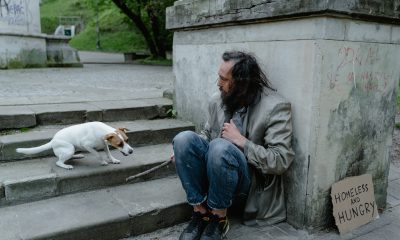Art and Culture
Fifty years of celebrating island culture at Toronto’s Caribbean Carnival

The festival celebrates Caribbean culture in Canada. It also reminds us of the history of creative resistance in which dehumanized, enslaved Africans celebrated life. (Photo by KatieThebeau/Flickr, CC BY 2.0)
In the aftermath of Toronto’s lively Caribbean Carnival last weekend — the 50th “jump up” since 1967 — it might seem naive or even rude to ask: Why have a Caribbean Carnival in Canada?
The festival celebrates Caribbean culture in Canada. It also reminds us of the history of creative resistance in which dehumanized, enslaved Africans celebrated life. An added benefit of Toronto’s annual Caribbean Carnival — formerly known as Caribana — is that it has served to educate Canadians.
But while it’s important to reflect on the significance of the Caribbean Carnival at its half-century mark, we must also look at the festival without any of the reductionist and neoliberal tendencies of “evaluators” so often seen in mainstream accounts of Black art and culture.
Rather, this moment is ripe for an introspective view that encompasses the many layers of this festival’s long and hotly debated history. By looking closely at the ways in which some of our cultural institutions have partnered with the festival over the years, one can grasp wider narratives about Caribbean Canadian life beyond the stale questions of government funding and economic stimuli.
The festival, like most, is powered by massive amounts of volunteer labour to successfully operate. But unlike other festivals, ornate masquerade costumes and floats are conceived and created for up to 12 months in advance. These major pillars of Caribana — volunteerism, costume design as well as the engineering of elaborate floats — are ideal areas upon which to reflect on the festival’s first 50 years.
Deep historical roots & feats of engineering
Most music festivals in Toronto are often viewed as economic stimulants or as youth-filled parties built on thin rationales, like a long weekend.
But the Carnival has always had deep and significant historical roots. The Carnival was, and continues to be, the place to celebrate life in spite of the dehumanization of colonialism and post-colonialism.
Its inception can be traced back to the 1881 Canboulay riots — the burning of Trinidadian sugarcane fields that sparked the earliest renditions of Carnival by enslaved Africans.
To celebrate the 100th anniversary of the founding of Canada, a version of Trinidad and Tobago’s world-renowned carnival was reborn in Toronto in 1967 as Caribana. This diasporic, Creolized version was decidedly a Canadian phenomenon, designed to celebrate the Caribbean presence in Canada.
Over the years, Caribana personified the ways in which Afro-Caribbean populations have experienced Canada. Scholars like m. nourBese philip, David Trotman and Jenny Burman have written about the ways in which Caribana experiences disproportionate scrutiny, consistently garners negative media attention and battles for funding despite generating hundreds of millions of dollars for the city of Toronto each year.
Since 2010, the Ontario Science Centre has sponsored the Innovation in Mas award that celebrates Carnival designers “whose creation best exemplifies the application of principles and practices of innovation that include risk-taking, problem-solving, daring perspectives in material use, mechanics and engineering.” Mas is short for “masquerade.”
The award is a welcome addition to the festival because few media outlets cover or explore the scientific feats that allow gigantic floats and costumes to maintain their structure and buoyancy after eight to 10 hours of chipping — or dancing — as they make their way along the parade route. Vivid short video clips from news segments hardly do justice to the complex ways in which Mas camps — places where costumes and floats are designed and constructed — enliven the festival and carry on tradition.
Countering and supplementing many of the colourful images of revellers, the science centre’s award presents the public with another narrative about the Caribbean Carnival, focusing our attention on what scientist Walter Stoddard calls the “skills, attitudes and practices of innovation — creativity, risk-taking and collaboration.”
Stoddard found all those qualities present at all the Mas camps he and the jury visited in the course of adjudicating the award, countering the mainstream media’s focus on the festival’s financial impact and shallow coverage of the public parade.
ROM also celebrates Carnival
Like the Ontario Science Centre, the Royal Ontario Museum (ROM) has had several exhibitions over the last decade to celebrate Caribbean culture. From 2008-2011, there was Roots to Rhythm, From the Soul: Caribana Art Exhibit and Beyond the Rhythm Caribana Art Exhibit.
The ROM, until its recent 2016 public apology, also held the dubious distinction of being the host of the deeply racist and problematic Into the Heart of Africa exhibition which celebrated colonial theft and perpetuated anti-Black racial stereotypes in the early 1990s.
Working closely within Caribbean arts communities, the ROM has managed to regain the trust of Toronto’s Black communities over the last 25 years. A case in point is its 2012-2013 exhibition of world renowned Mas costume designer Brian MacFarlane. Carnival: From Emancipation to Celebration provided the general public with an opportunity to learn the history of Carnival and better understand Caribana’s historical importance from the 2013 Carnival Symposium.
By focusing on emancipation and the roots of Carnival and bringing scholars, Mas camps and artists together, the ROM provided ample opportunity for Canadians of all backgrounds to learn the history of a festival that attracts more than a million revellers each year.
The involvement of both the ROM and the Ontario Science Centre have helped to educate the general public on Caribbean culture that goes beyond a fixation on luxurious vacation destinations and reggae music.
These cultural institutions have provided nuanced and informative counternarratives to the overly simplistic, economic reductionist depictions of Caribana by mainstream media outlets. The story of Caribana is an epic, multi-layered and deeply historical one rooted in the innovative engineering of Mas design, droves of devoted volunteers, the spirit of social critique and the cultivation of community.
Thankfully, 50 years later, a richer story of Caribbean Carnival in Toronto is unfolding, allowing the festival to continually grow and enhance the Canadian social fabric.
This article was originally published on The Conversation, an independent and nonprofit source of news, analysis and commentary from academic experts. Disclosure information is available on the original site.





















